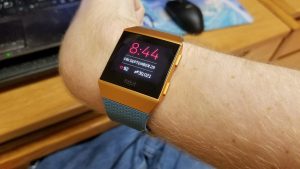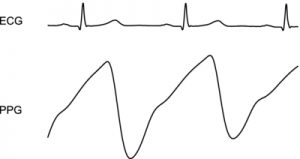Until the decade of 2010, ambulatory devices that measured biometric variables were scarce and with markedly clinical use. Hardly any wearable devices were known for sports, leisure, or improving the quality of life. Either they were implanted intrusive devices (like pacemakers), or they were not comfortable. This restricted it to a punctual use, like Holter. In this post, learn how to use your wearable device correctly by looking at the heart rate.
Popularity of smartwatches
With the advent of sports wristbands, the use of these devices that collect biometric variables became popular. Nowadays they are so common that their functionalities have been integrated into the most popular smartwatches. These devices not only measure biometric variables such as movement, temperature, heart rate, sweating or the amount of oxygen in the blood, but also geolocate us. So many are the uses of these devices that their popularity and use has grown exponentially. Its use is not restricted only to sports activities, but as a fashion complement of day to day.

This work is licensed under the Creative Commons Attribution 4.0 License
The quality of the data collected by the sensors of the wearable devices is high in terms of resolution. The number of samples collected per second does not reach that of medical devices. However, its benefits are more than sufficient for the uses that are being given. Even so, there is a problem, and that is that the quality of the data depends not only on the sensors but on how we place the body.
Correct monitoring
Think of someone you know and use some of these wearable. Imagine in a situation in which you have seen it worn, does a green or red light come to mind? Yes, right? Well, I’m sorry to tell you that if you saw the light, that person was wearing it badly. Maybe that person was you! Do not worry, we’ll tell you how to use your wearable correctly by looking at the heart rate, and we’ll show you why it should be worn like that.
The wearable devices mostly measure the heart rate, as a very interesting signal for athletes and monitoring of some diseases. Heart rate values, or HR, have been calculated in many ways over time; I’m sure you’ll hear some of these:
- Auditory with doctors’ stethoscope
- Sensitively, taking the pulse in your neck or wrist
- Through the electrical signal of the electrocardiogram (ECG), as Holter do, or the electrocardiographic tests of the hospital
HR optical measurement
Can you guess how the wearable measure it? Effectively, with the green (or red) light seen below them. This optical method measures the photoplethysmography or PPG signal. This signal is the shape that draws the passage of the bloodstream through the arteries after pumping the heart, and that’s why it looks so much like the ECG. The devices have a green LED and a photoreceptor-a sensor capable of measuring the amount of light that comes to you. When the sensor is on our skin, the light passes through it and-after being attenuated a little by the dermal layers-bounces off our arteries. The more blood goes through the artery, the more oxygen goes through it and more light is absorbed. The light that is reflected goes back through our skin layers, the skin and reaches the photoreceptor. Taking measurements over time, we managed to draw the photoplethysmography curve.
And why was he doing it wrong if that light was seen? If you see the light emitted by your wearable device is that the device is not properly attached and is not in contact with the skin. If it is not in contact with the skin, that light that bounces in the arteries and returns to the photoreceptor diffuses in that layer of air that is between our skin and the sensor. In this case the measurement will be wrong and our heart rate will not be correct. In addition, the ambient light from the outside is measured by the sensor. Therefore, the signal is distorted and the information of our associated application will not be reliable.
Tips for good monitoring
As measures in general to have good data quality:
- Hold the bracelet tight and do not see the green light! But we do not want you to be uncomfortable. The bracelet should not hurt you. To avoid discomfort and that is well attached, it is recommended to change your wrist every 12 hours of monitoring
- Use the bracelet on the non-dominant hand (the one that we do not use to write). The movement of our hands also interferes with the quality of the data. It is recommended to wear the bracelet in the non-dominant hand , since it is the one that we least move
- Read the cleaning recommendations of the device. A cloth dampened with the alcohol from our medicine cabinet is enough to remove the dirt adhering to our sensor
You have already learned how to wear your wearable device correctly by checking your heart rate. In other posts of this Blog we will see how it affects the way to wear the bracelet in other biometric signals.

